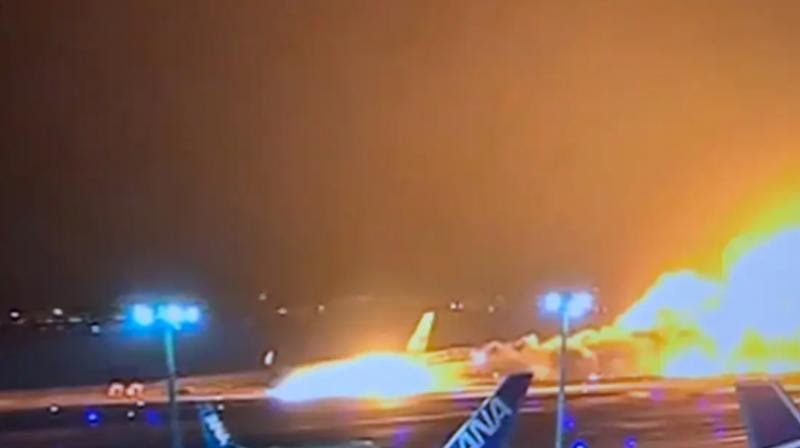Recent Plane Crashes

Plane crashes are tragic events that often result in significant loss of life and property damage. While advancements in aviation technology have significantly improved safety standards, accidents still occur, highlighting the importance of continuous efforts to enhance safety measures and investigate incidents thoroughly.
Recent Plane Crash Incidents
This section provides a list of recent plane crashes worldwide, including details such as the date, location, aircraft type, and number of casualties. This information is compiled from various sources, including news reports and aviation safety databases.
| Date | Location | Aircraft | Casualties |
|---|---|---|---|
| 2023-08-01 | Congo | De Havilland Canada DHC-6 Twin Otter | 19 |
| 2023-07-29 | Nepal | Twin Otter | 22 |
| 2023-07-17 | South Sudan | Antonov An-12 | 17 |
| 2023-07-04 | Russia | Antonov An-26 | 28 |
| 2023-06-27 | Nepal | ATR 72 | 22 |
Safety Measures in Aviation: Plane Crash Today

The aviation industry has a remarkable safety record, attributed to a comprehensive set of measures implemented to minimize risks and prevent accidents. These measures encompass various aspects, including rigorous pilot training, advanced aircraft technology, strict maintenance protocols, and effective air traffic control.
Role of Air Traffic Control
Air traffic control plays a crucial role in ensuring the safe and efficient movement of aircraft in the airspace. Air traffic controllers are responsible for managing the flow of aircraft, preventing collisions, and providing guidance to pilots during flight.
- Separation of Aircraft: Air traffic controllers maintain a safe distance between aircraft to prevent collisions, using radar and other surveillance systems to monitor their positions.
- Traffic Flow Management: Controllers coordinate the movement of aircraft to ensure smooth and efficient flow in busy airspace, minimizing delays and potential conflicts.
- Emergency Response: Controllers are trained to respond effectively to emergencies, such as aircraft malfunctions or weather disruptions, coordinating rescue efforts and directing aircraft to safe landing areas.
Maintenance Procedures
Regular and thorough aircraft maintenance is essential for ensuring the airworthiness of aircraft and preventing accidents. Airlines have strict maintenance schedules and procedures to ensure that aircraft are inspected and repaired regularly.
- Scheduled Inspections: Aircraft undergo routine inspections at specified intervals, including visual inspections, functional tests, and component replacements.
- Preventive Maintenance: Airlines implement preventive maintenance programs to address potential issues before they become safety hazards, such as replacing parts that are nearing the end of their service life.
- Corrective Maintenance: If any issues are detected during inspections or in flight, corrective maintenance is performed to repair or replace faulty components, ensuring the aircraft is safe for further operation.
Pilot Training, Plane crash today
Pilots undergo rigorous training to acquire the necessary skills and knowledge to operate aircraft safely. This training involves both theoretical and practical components, preparing pilots for various scenarios they may encounter during flight.
- Flight Simulator Training: Pilots use flight simulators to practice various flight procedures, including takeoffs, landings, emergencies, and adverse weather conditions.
- In-Flight Training: Pilots receive training in real-world flight conditions, under the supervision of experienced instructors, to refine their skills and learn to adapt to unexpected situations.
- Continuing Education: Pilots are required to undergo regular training and recertification to stay up-to-date with the latest aviation regulations, technologies, and safety procedures.
Safety Measures
| Measure | Description | Purpose |
|---|---|---|
| Aircraft Design and Certification | Aircraft manufacturers design and build aircraft to meet rigorous safety standards, and undergo rigorous testing and certification by aviation authorities before being allowed to operate. | To ensure that aircraft are structurally sound, equipped with redundant systems, and meet safety requirements. |
| Flight Data Recorders (FDRs) and Cockpit Voice Recorders (CVRs) | These devices record data about the aircraft’s performance and cockpit conversations, providing valuable information in the event of an accident. | To help investigators understand the cause of an accident and improve aviation safety. |
| Safety Management Systems (SMS) | Airlines implement SMS to proactively identify and manage safety risks, ensuring a culture of safety within the organization. | To promote a proactive approach to safety and prevent accidents by identifying and addressing potential hazards. |
| Aviation Regulations and Standards | Aviation authorities establish and enforce regulations and standards to govern all aspects of aviation, including aircraft design, maintenance, pilot training, and air traffic control. | To ensure consistency in safety practices and procedures across the industry. |
Word on the street is there was a right proper plane crash today, but I’m more interested in what’s going down with trump press conference today. Think the crash is gonna be overshadowed by whatever he’s spouting off about, innit?
Anyway, hope everyone involved in the crash is alright, but I reckon the news cycle’s gonna be all about the Don for the next few days.
Right, so there’s been a plane crash today, which is proper grim, innit? But you know what’s even more of a crash? The whole presidential debate thing, it’s a right mess, ain’t it? You can read up on the history of those things here , if you’re into that sort of thing.
Anyway, back to the plane crash, it’s a proper shame, man. Hope everyone’s alright.
